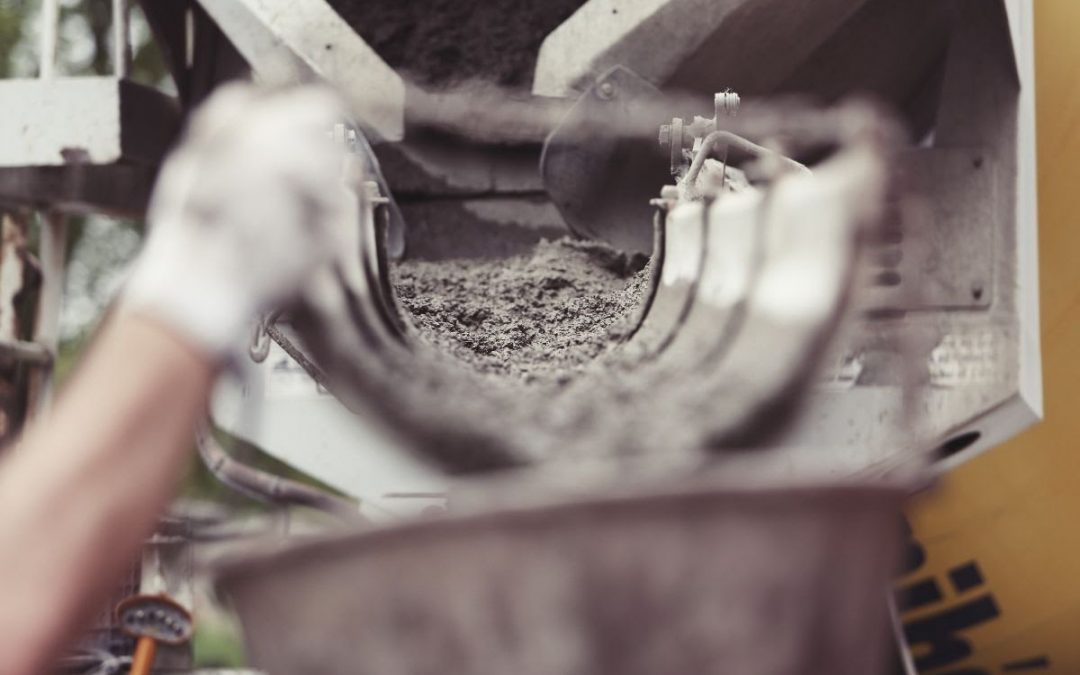Published February 5, 2021
Concrete is the most widely used construction material in the world by a large margin. It is present in nearly every major infrastructure and with good reason. Concrete is known to be incredibly strong, durable, and long-lasting. But not all concrete is the same. There are many different types made for various uses. Some are more appropriate for large-scale projects than others. Likewise, others are better for DIY projects. In this article, we’ll be going over the ten most common types of concrete.
Why concrete?
Walking down any street, you’ll find concrete everywhere; you’ll find it in buildings, sidewalks, even roads. But why is this material so commonly used in construction? Concrete is crucial to buildings, as it’s the material that provides strength and structure. It is a mix of aggregates and cement, which results in a super-strong material when dried. Whereas other materials like wood rot and degrade over time, concrete can get stronger through the years. It’s also inexpensive, allowing you to use tons of it in one project. But enough of that, let’s get right to the juicy bit.

The 10 Most Common Types of Concrete
Plain Concrete
We start this list off with the most used type of concrete: plain concrete. Plain concrete is made with a simple mixture of Portland cement with aggregates and water. It’s quite simply the most basic form of concrete that requires no reinforcement. The proportion of cement to aggregates and water is typically 1:2:4. This proportion may differ, but most plain concrete has similar characteristics. They’re strong under compression but weak under tension. As such, you can find this in pavements, footpaths, and ground flooring.
Reinforced Concrete
As you may have guessed by its name, reinforced concrete has reinforcements, unlike plain concrete. Reinforcement typically comes in the form of steel bars, rods, or mesh embedded into the concrete. What this does is increases the strength of the resulting material. In contrast to plain concrete, reinforced concrete has more compressive and tensile strength. Most concrete applications need a certain element of reinforcement.
Ready-mix Concrete
Ready-mix concrete refers less to its inherent properties and more to its preparation. This type of concrete refers to concrete that’s mixed at a central location before being distributed to different job sites. Contractors must transport the mixed concrete quickly to prevent it from hardening. Ready-mix concrete is transported by the familiar concrete trucks we see. Once these trucks arrive at their respective construction sites, the concrete may be used immediately.
Asphalt Concrete
Asphalt concrete, or simply asphalt, is a composite material used in airport runways, roads, and pavements. Asphalt grew in popularity back in the 1800s because of the rise of automobiles. Since then, new methods and technology have emerged in paving asphalt. Asphalt is known to have a number of desirable properties that make it perfect for roads. It’s durable, workable, skid-resistant, fatigue-resistant, and flexible. However, the mixture must be properly engineered and placed to get the most out of it. Asphalt comes in even more sub-types, which we won’t get into right now.
Lime Concrete
Limecrete, a portmanteau of lime and concrete, is a type of concrete that uses lime instead of Portland cement in its mix. Concrete with lime cement is one of the oldest kinds, being over 5000 years old. Compared to Portland cement, lime is the more environmental and healthy option. Lime is a non-toxic material that readily absorbs humidity, preventing mold formation. Limecrete is more flexible and workable than plain concrete, but it’s not as strong and takes a while to set. Despite its weaknesses, you can see it being used in vaults, domes, and floors.
Prestressed Concrete
Many large-scale megaprojects use prestressed concrete units. This particular type of concrete goes through prestressing to mold it to the required shape. It is similar to reinforced concrete because it also has steel reinforcements embedded into it. Creating prestressed concrete requires an extensive process that increases its strength. The construction of large structures, such as flyovers and bridges, requires prestressed concrete.
Precast Concrete
This type of concrete is typically cast and molded in a separate factory, similar to ready-mix concrete. Precast concrete is created to meet individual specifications before it is transported to the site to be assembled. This type of concrete is typically used for:
- Concrete blocks
- Precast walls
- Staircase units
- Poles
Lightweight Concrete
What makes this concrete unique is that it uses pumice rock instead of other rock aggregates. Lightweight concrete has a density of less than 1920 kilograms per cubic meter. Because it is less dense, it is used more for protection than for its structural qualities. You will often find lightweight concrete as insulation for water pipes as well as in the construction of long-span bridge decks.
High-density Concrete
Dense concrete is used for its radiation shielding capabilities. It has a density of 3000 to 4000 kilograms per cubic meter and consists of high-density rocks or aggregates and man-made materials, such as iron and steel. It’s used in places that require counterbalancing, ballasting or stabilizing. You will often see this type of concrete in the construction of atomic power plants, where radiation shielding is paramount.
Rapid-set Concrete
If you’re in a hurry to complete your project, rapid-set concrete is perfect. As per its name, rapid-set concrete sets in much less time than it takes regular concrete. Additionally, it is resistant to low temperatures, which may be useful for winter projects, where other concrete wouldn’t be.
Interested In Cutting Technologies?
For nearly 40 years Cutting Technologies (CTI) has been the go-to demolition contractor for technically demanding, one-off jobs. Our wealth of experience enables CTI to bring “outside-of-the-block” approaches to achieve the impossible. Contractors trust CTI to get the job done right. Take a look at our demolition services on our website.

About The Author
Terrence Tan Ting is an industrial engineer by profession but a full time writer by passion. He loves to write about a wide range of topics from many different industries thanks to his undying curiosity.

